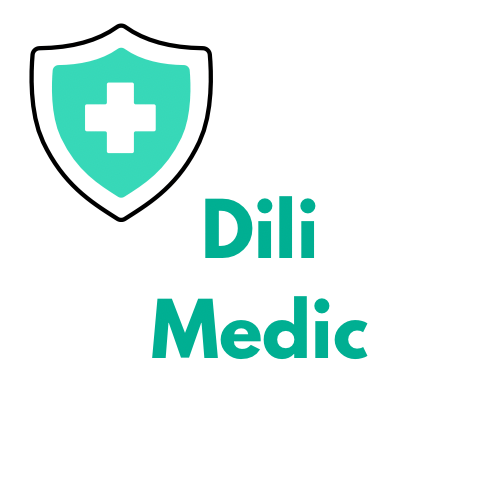
10 Smart Features to Demand from Your Next Health & Wellness Platform
Share

Empower Health with a Smart, Transformed Platform
Choosing the right digital health and wellness platform is more than a technical decision. It is a vital step toward better, more connected care. A strong platform should support real-time remote monitoring, provide clear data insights, and integrate smoothly into clinical workflows.
It must guide users through personalized daily routines, track biometric changes as they occur, and ensure that health records are secure and easily shareable across systems. With the right tools in place, care teams can catch early warning signs, improve daily adherence, and enhance communication between patients, providers, and caregivers.
Key Takeaways:
|
A top-tier platform merges real-time monitoring, clinical decision support, and personalized engagement. |
|
Seamless integration with devices and EHR systems improves both adoption and continuity of care. |
| Security, privacy, and dynamic consent are not optional; they are essential. |
| User-centric design, gamification, and social features boost long-term engagement. |
| Platforms that support data analytics, behavioral insights, and adaptive workflows offer real value in health outcomes. |
Smarter Health Decisions Through Live Trend Analytics

A powerful digital health platform should collect continuous data from wearables and patient inputs, including heart rate, sleep quality, glucose levels, and physical activity. These insights play a key role in identifying early signs of health issues and supporting chronic care programs for conditions such as heart disease, diabetes, and post-discharge recovery. With real-time analytics and instant alerts for abnormal patterns, care teams can respond faster, improve outcomes, and help patients avoid unnecessary hospital visits.
Smarter, Safer Decisions with Embedded Clinical Intelligence

Leading digital health platforms are designed with clinical decision support tools that analyze patient data in real time. These systems deliver instant alerts about potential risks, medication issues, or preventive care needs.
How It Works and Why It Matters
A clinical decision support system monitors lab results, medications, symptoms, and lifestyle data around the clock. If it detects something concerning, high cholesterol, or a medication mixture, it immediately notifies the care team.
This real-time insight helps stop problems before they start. Good medication safety encourages preventive care and supports consistent clinical decisions. Patients get the right care faster, and providers can act with greater confidence.
Personalization & AI‑Powered Coaching

A smart health platform should do more than track data. It should turn that data into personalized guidance. Using AI, the system can learn from each user’s habits, health trends, and goals to deliver tailored coaching that fits their daily routine.
From reminders to move more to adjusting a nutrition plan, AI-powered coaching makes healthy living more manageable and motivating. A relatable touch that will improve user engagement and support long-term behavior change that leads to better outcomes.
Engagement Tools: Gamification & Social Communities

Staying healthy is easier when it feels rewarding. Gamification features like badges, progress streaks, and health challenges turn routine tasks into motivating goals. They help users stay consistent and make wellness feel fun, not forced.
Social communities add another layer of support. Connecting with others on similar health journeys builds accountability, encourages sharing, and keeps users engaged. Together, these tools boost motivation and drive long-term participation.
Outcome Reporting, Dashboards & Analytics

A good platform should make it easy to see progress. Visual dashboards that display key health metrics in real time, giving both users and care teams a clear view of what’s working and what needs attention.
Outcome reporting tools track trends over time and highlight results from interventions. This helps guide better decision-making, supports accountability, and proves value in care delivery. With the right analytics, every step becomes more informed and impactful.
EHR / Patient Portal Integration

Seamless integration with electronic health records and patient portals to keep information connected. It allows care teams to access up-to-date data without switching systems, improving coordination and reducing errors.
For patients, it means they can view test results, track progress, and communicate with providers all in one place. This creates a smoother, more transparent experience that builds trust and supports better health management. Features for an Effective Patient Engagement Platform
Scalability, Availability & Data Security
A digital health platform must improve with demand. Scalability ensures the system performs well whether it’s serving hundreds or millions of users. High availability means the platform stays online when it’s needed most.

Data security is non-negotiable. Strong encryption, role-based access, and regular audits protect sensitive health information. This builds trust and ensures compliance with industry standards like HIPAA and GDPR. Wellable scalable features.
Patient-Centered Design & User Experience
A health platform should be easy to use for everyone, not just tech experts. Patient-centered design focuses on simplicity, clarity, and accessibility across all devices. Whether users are scheduling appointments, logging symptoms, or reviewing progress, the experience should feel intuitive.
A smooth interface reduces frustration and increases daily use. When users feel comfortable navigating the platform, they’re more likely to stay engaged and stick to their health goals. Check out the Top Wellness Platforms for Employees in 2025.
Accessibility & Health Equity Features

A truly effective platform must serve all users equally. Accessibility features like screen readers, voice commands, and multilingual support ensure that people of all abilities and backgrounds can engage with their care.
Health equity tools go a step further by identifying and addressing social and economic barriers. By tailoring experiences to meet diverse needs, platforms help close care gaps and deliver better outcomes for underserved populations.
FAQs
-
Q: Which feature matters most for clinical impact?
Continuous remote monitoring and clinical decision support together facilitate early intervention and reduce unnecessary healthcare utilization. -
Q: Should platforms include gamification?
Platforms with gamified behaviors (rewards, social feeds) typically report higher engagement rates and better health outcomes. -
Q: How is user data protected?
Platforms should utilize encryption, comply with privacy laws (GDPR, HIPAA), and offer dynamic consent options for users to control data sharing.
